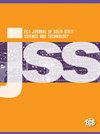使用离子交换树脂颗粒对 304 不锈钢进行干式电化学抛光的研究
IF 1.8
4区 材料科学
Q3 MATERIALS SCIENCE, MULTIDISCIPLINARY
ECS Journal of Solid State Science and Technology
Pub Date : 2024-07-08
DOI:10.1149/2162-8777/ad6034
引用次数: 0
摘要
摘要:干式电化学抛光(DECP)技术将树脂颗粒的机械作用与工作溶液的电化学作用相结合,以提高现有处理的效果。与机械抛光相比,干式电化学抛光技术的主要优势在于可对工件的整个表面进行均匀抛光。本文利用这种方法抛光 304 不锈钢表面,使金属表面粗糙度 (Ra) 在 1.23m 至 98nm 之间。这一创新拓展了 304 不锈钢在医疗和食品行业的潜在应用。能量色散 X 射线光谱(EDS)分析无法检测到残留的电解质成分,而含有液态电解质的树脂颗粒可有效避免有害的亚硝酸盐残留在金属表面。抛光样品的电化学分析表明,与初始样品的-0.291V 相比,DECP 特定样品的 Ecorr 为-0.109V,抛光过程可视为腐蚀产物的生成和去除过程。本文章由计算机程序翻译,如有差异,请以英文原文为准。
Investigation on the Dry-Type Electrochemical Polishing of 304 Stainless Steel with Ion-Exchange Resin Particles
Abstract: Dry-type electrochemical polishing (DECP) technology combines the mechanical action of resin particles with the electrochemical action of working solutions to enhance the results of existing treatments. Homogeneous polishing across the entire surface of the piece is the main advantage compared to mechanical polishing. This article utilizes this method to polish the surface of 304 stainless steel, resulting in a metal surface roughness (Ra) in the range of 1.23m to 98nm. This innovation expands the potential applications of 304 stainless steel in the medical and food industries. Energy dispersive X-ray spectroscopy (EDS) analysis cannot detect residual electrolyte components, and resin particles containing liquid electrolytes can effectively avoid the harmful substanc remain on the metal surface. Electrochemical analysis of polished sample shows that the Ecorr was -0.109V for DECP specific sample compared with -0.291V for initial sample, and the polishing process can be seen as the generation and removal of corrosion products.
求助全文
通过发布文献求助,成功后即可免费获取论文全文。
去求助
来源期刊

ECS Journal of Solid State Science and Technology
MATERIALS SCIENCE, MULTIDISCIPLINARY-PHYSICS, APPLIED
CiteScore
4.50
自引率
13.60%
发文量
455
期刊介绍:
The ECS Journal of Solid State Science and Technology (JSS) was launched in 2012, and publishes outstanding research covering fundamental and applied areas of solid state science and technology, including experimental and theoretical aspects of the chemistry and physics of materials and devices.
JSS has five topical interest areas:
carbon nanostructures and devices
dielectric science and materials
electronic materials and processing
electronic and photonic devices and systems
luminescence and display materials, devices and processing.
 求助内容:
求助内容: 应助结果提醒方式:
应助结果提醒方式:


